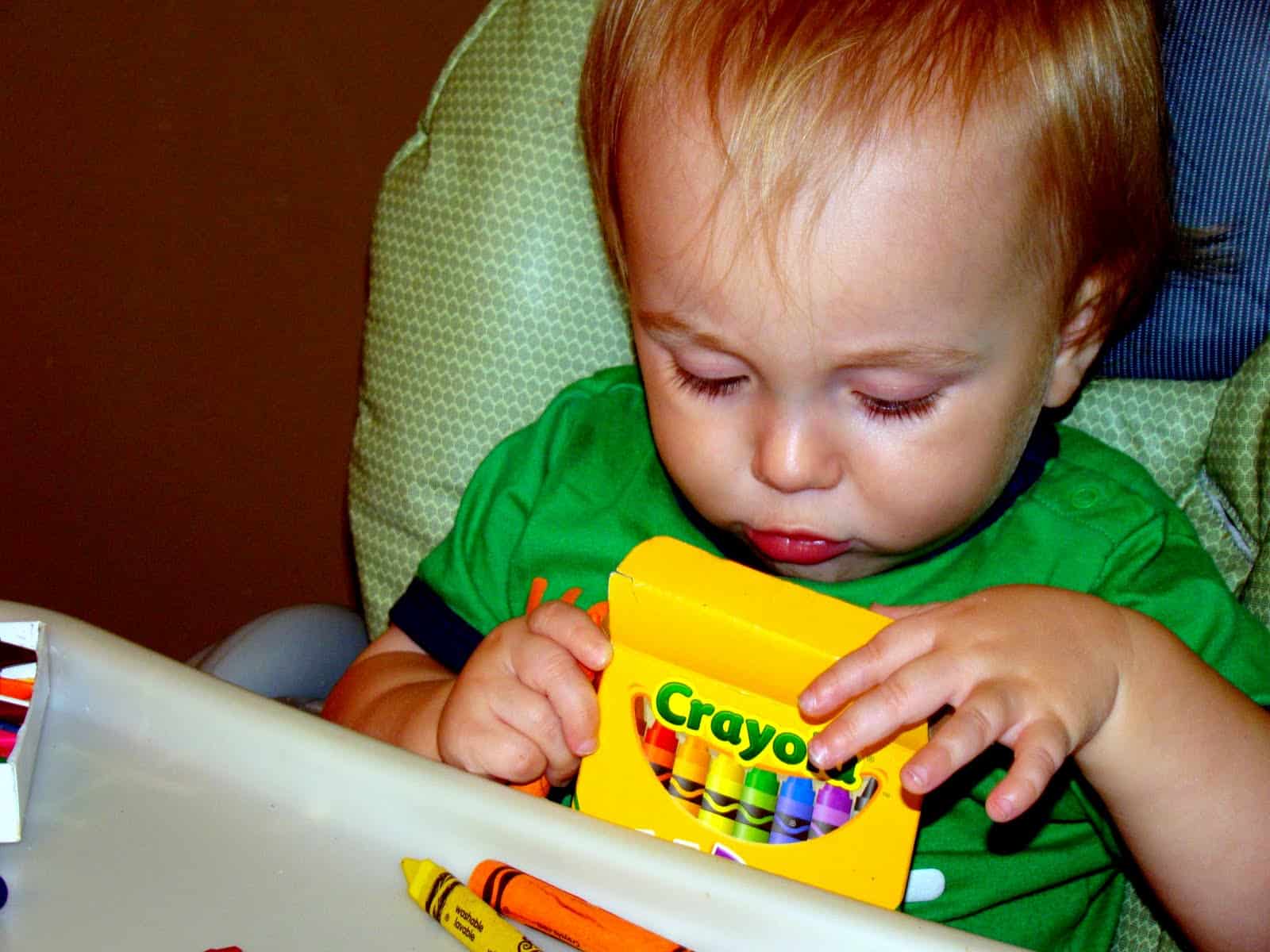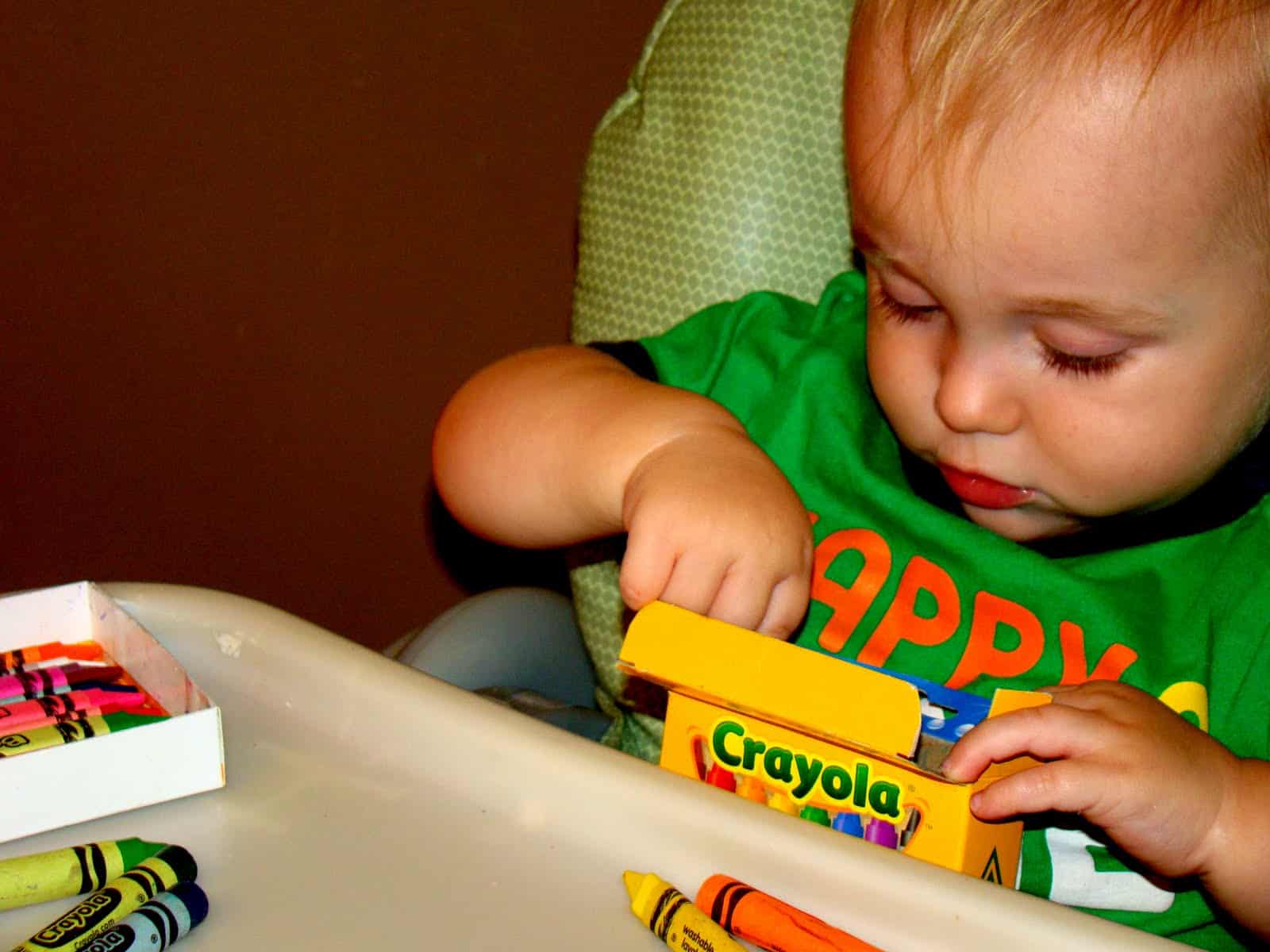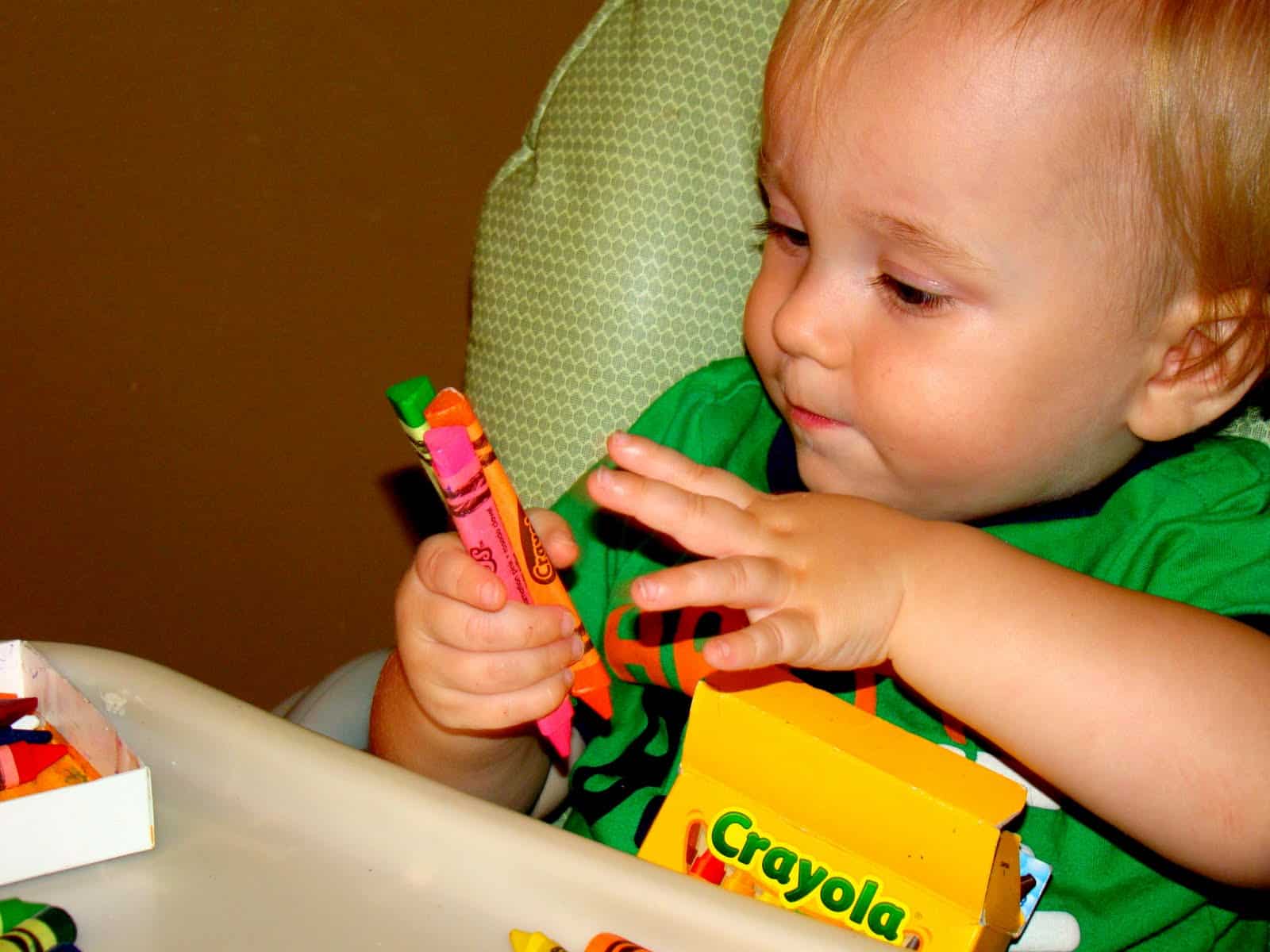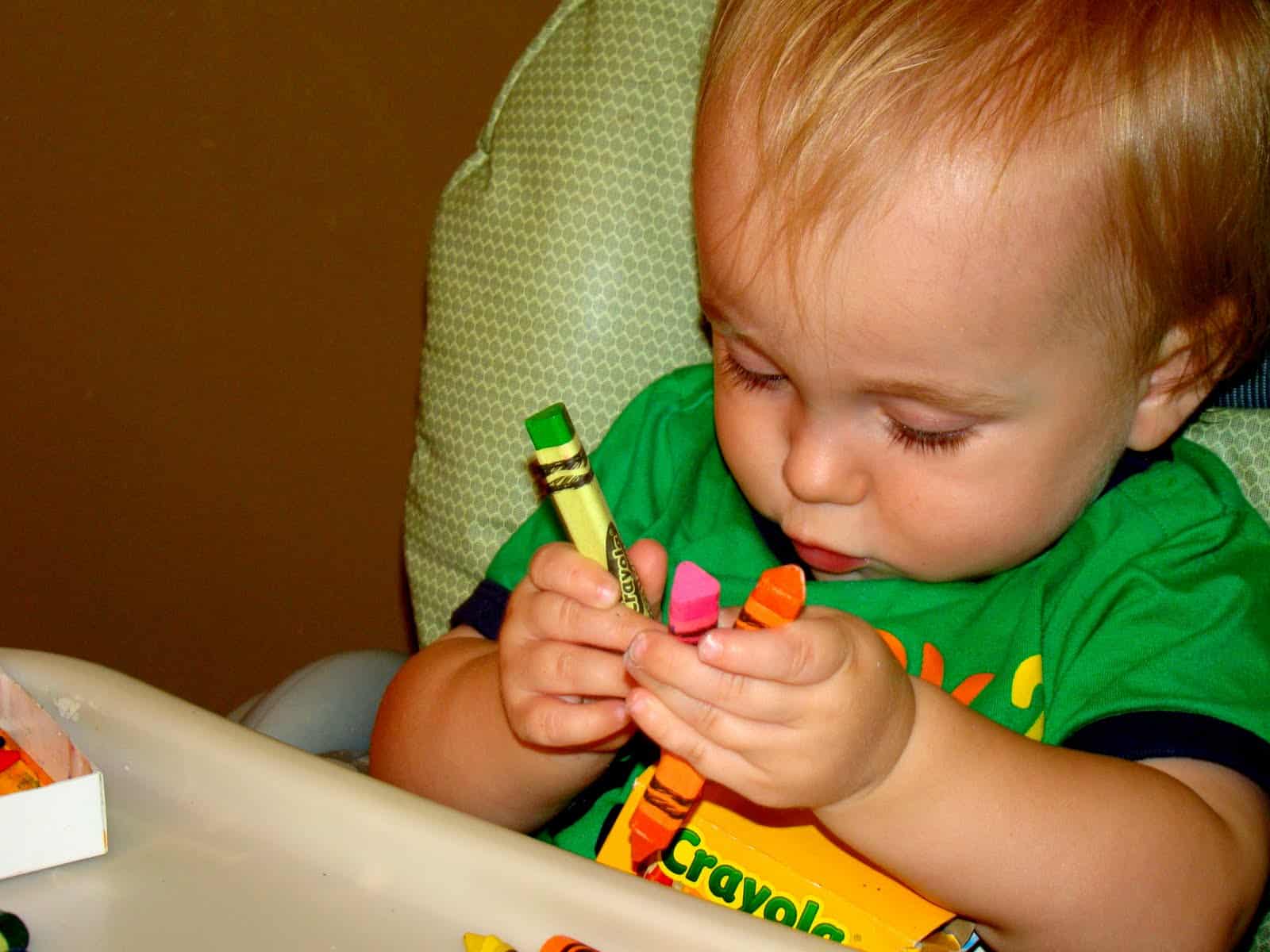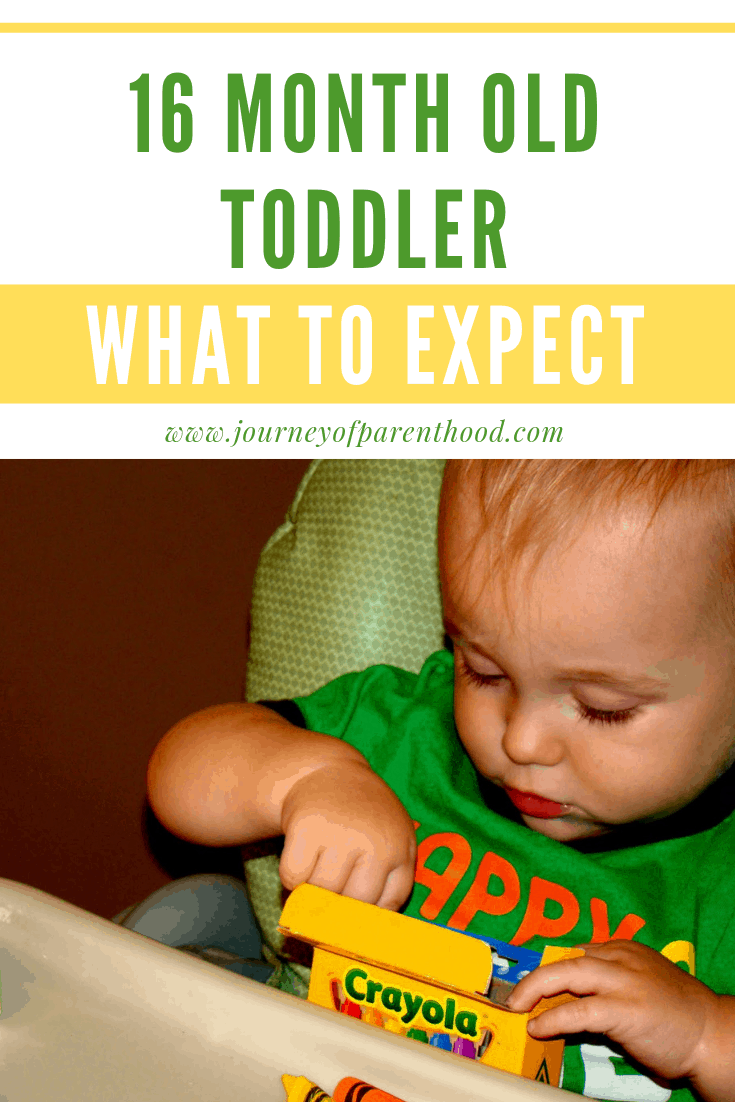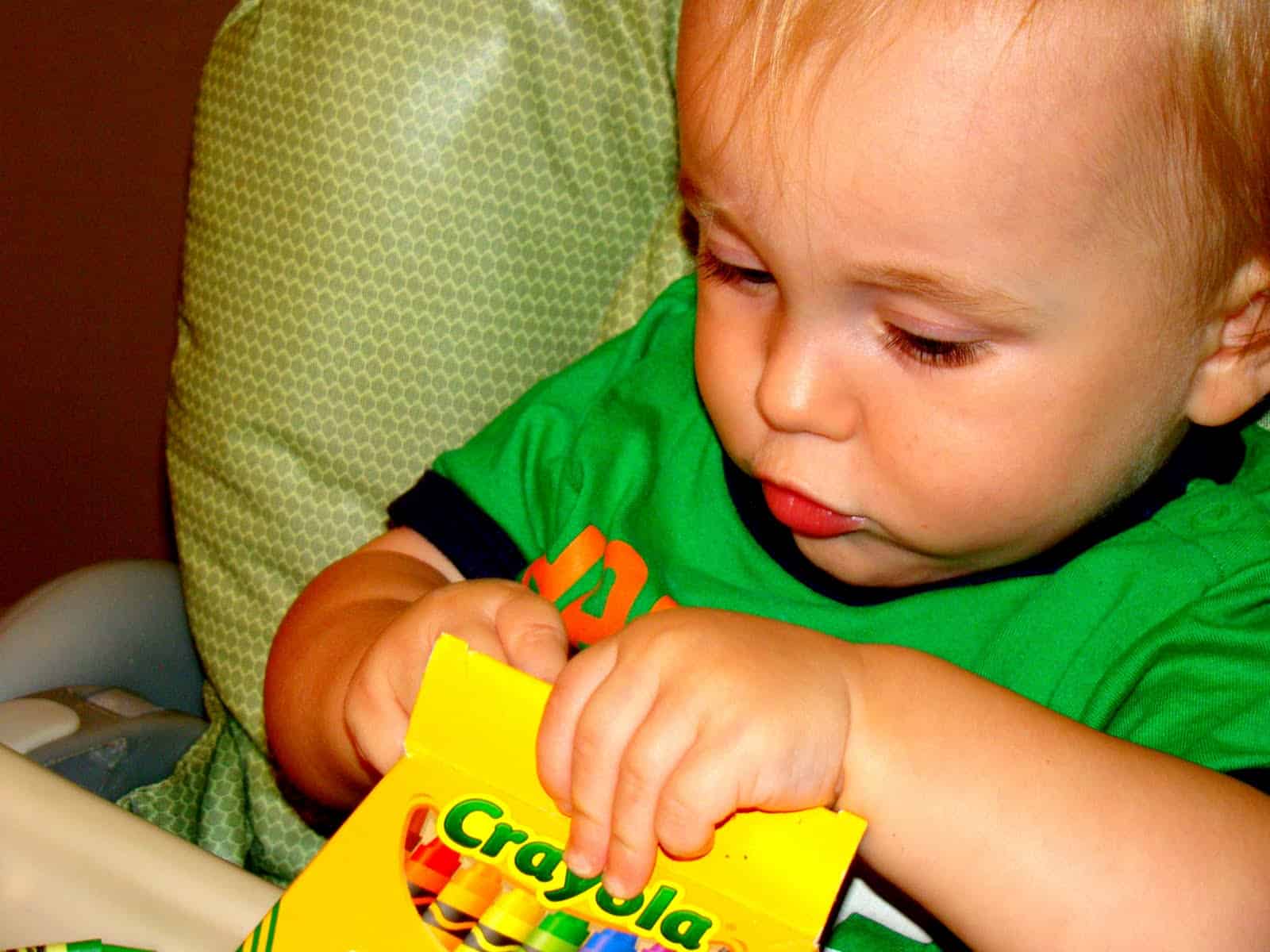For this month’s summary, I included some pictures of Kye with his crayons.
He’s been hardcore into putting things in and out of storage containers and his favorite thing to do with crayons is put them in the box, take them out of the box, then put them back in the box again.
He’s getting pretty good at it and I’m hopeful that he’ll be Mommy’s helper for cleaning soon 🙂
Kye can do all the things that What to Expect the Toddler Years 
- imitate activities
- scribble
Side note: this section has a little note below it saying that if your child (by the end of the 16th month) isn’t doing these things then you should check with your doctor.
It also says to check with your doctor if your toddler seems out-of-control, uncommunicative, overly passive, highly negative, doesn’t smile, makes few or no sounds, doesn’t seem to hear well, is perpetually irritable, or demands constant attention.
I wanted to let you know about this as I know some people read my blog to see where their child is compared to what the book says!
Kye can also do all the things that a 16 month old “will probably” be able to, “may possibly” be able to, and “may even” be able to do including:
- say 3 words
- use an object in imitation
- say 6 words
- run
- kick a ball forward
- brush teeth, with help
Seems like the list was short this month! I guess maybe it’s a time where kids all start to balance out or something?
I peeked ahead at month 17 and there is a LOT more on that list so I’ll make sure to have pictures to go with it next month for sure as I know it’s boring to just read and not have pictures to break it up!
This chapter covers pet safety issues with toddlers which was good for me to review.
Kye LOVES our pets and they do very well with him but I’m always careful to never leave him alone with any of them, even the cat as those back claws could do some damage!
A good tip this mentioned that I didn’t know is to teach your child to pet animals under the chin instead of on top of the head b/c it shows dominance.
Several pages of this chapter were devoted to eating related issues. Sure, Kye’s a little pickier now but I am not freaking out over it.
I’m just adjusting for now and know that he’ll get back on track soon enough. I think teething at this age has a LOT to do with the food issues.
Part of the eating section it also mentions moving to a booster seat over the high chair. I was wondering about this the other day, when did you do it?
I feel like Kye’s a bit young and I’m not in a rush for it (only because we don’t own a booster seat so why buy one?).
It seems like it’d be a pain to have him at the table with us all the time. I know when we use his little travel clip-on seat he’s basically eating like he would in a booster seat and it’s annoying with him being able to SEE everything we have so well and want it!
It’s funny in this chapter because there are both situations dealing with a fear of something (like pets) then a no fear of that same thing.
It made me think about Lorelai and Kye…Robyn would probably read the “fear” parts and I’m reading the “no fear” parts. Both have their disadvantages for sure!
One of the “no fear” sections I read was about not fearing strangers and running up to everyone.
Kye’s this way and it does make me nervous.
Luckily, I’m able to keep a constant eye on him but I won’t always be able to do that and I like how the book explained that I can start laying the groundwork for Kye to learn how to handle strangers now, even though it won’t sink in with him for a while.
I especially liked that the book says not to send a message that strangers are universally menacing but just to tell him that he needs to always get my approval before talking to a stranger, going to one or with one, or taking something (FOOD Kye FOOD) a stranger offers him. My goal should be to make my child prudently cautious, not unreasonably fearful. Good point!
Some other things this chapter discusses that didn’t really jump out at me but may be worth exploring later if needed are bath rejection issues, readiness for potty learning, climbing, and crooked teeth.
It discussed in this section that at this age children are more interested in disobeying than they are pleasing. I have FOR SURE noticed this one!
Kye will look right at me and still do what I tell him not to do. I know that by being consistent with our discipline (I have a post on the way about our methods) that he’ll get through this stage but it’s an annoying one. Finally, it has a section about molars.
Kye already has three poking through so I think we’re through the worst of it and it hasn’t been that bad! Of course, I say that and it could get worse but we’ll see.
I’ve been dealing with a MEGA runny nose (clear, of course) for a month and I’ll continue dealing with it as long as he needs just so long as he doesn’t get other, much worse, teething symptoms 🙂
At the end of each chapter, there are sections titled “what it’s important to know” and “what’s important for your toddler to know.”
The first one covered how to encourage learning, thinking, and new experiences.
It says that one of the most important things a child this age can learn is to LOVE learning and that it’s vital to cultivate their natural creativity in order to propel early learning.
Ways to fertilize Kye’s curiosity so it can blossom into a lifelong love of learning include:
- accept, encourage and answer questions (um he can’t even ask questions yet, other than just pointing at stuff)
- accept and encourage exploration.
- accept and encourage experimentation. Obviously, it’s best to devise little “experiments” that can be conducted under controlled conditions.
- expose him to a variety of environments. They pick up so much through the power of observation so exposing him to new things is important. I’m BIG on this one and it’s part of the reason I try to go and do so much with Kye!
- expose him to a variety of experiences. (to me this kinda goes hand in hand with the environment one) The experience alone is valuable but your commentary, like “see, the harder you push the swing, the higher up it goes,” can help make them more valuable still.
- discourage excessive TV viewing. Children who learn from tv expect answers to come to them in the form of glitzy, fast-moving graphics. They become complacent learners, their natural impulse to make their own discoveries is suppressed.
- build learning into everyday activities. I need to do better at this…I can introduce numbers by simply saying “do you want two crackers?”, colors by saying “look at the green shirt you’re wearing!” and other simple lessons by just discussing them with him and observing the world around us together.
- foster learning by nurturing self-esteem
- make learning fun
- set a curious example. If I get excited about learning and show Kye that I still enjoy learning too then he’ll be more likely to be excited as well!
The “What’s important for your toddler to know” section covers how to teach your child to love reading.
I’m not overly concerned about this as we read all the time and Kye loves it but here’s a quick list of things to do to help foster a love for books:
- be selective in book choices (age appropriate, durable, etc)
- be persistent (good tip to put a story time in the morning as well as the one at night for part of his schedule!)
- be creative (don’t feel like you can only read what the author writes)
- be interactive (ask lots of questions to get them involved…even just by simply having them point to certain objects in the story)
- be expressive
- be brief
- be cuddly (you don’t have to say that twice!)
- be a good example (this makes me think about the goal Zach and I keep saying we have of starting a family Bible Study each night…talk about a good example for reading!!!)
Reading all of this inspires me to do better with parenting.
It kinda makes me feel guilty because I feel like Kye spends WAY more time “golfing” than he does learning or reading! I really, really want to set up structured learning time, family bible study time, and now I also like the idea of reading a quick story in the morning too.
Lots to strive for this month, we’ll see how I do!
- 10th Birthday Message For My Daughter Love Mom {Tess’s 10th Birthday Letter} - June 12, 2025
- Tips to Maintain Structure While Traveling with Kids - May 22, 2025
- A Letter to my Son on His 16th Birthday From Mom (Kye’s Bday Letter) - April 30, 2025





